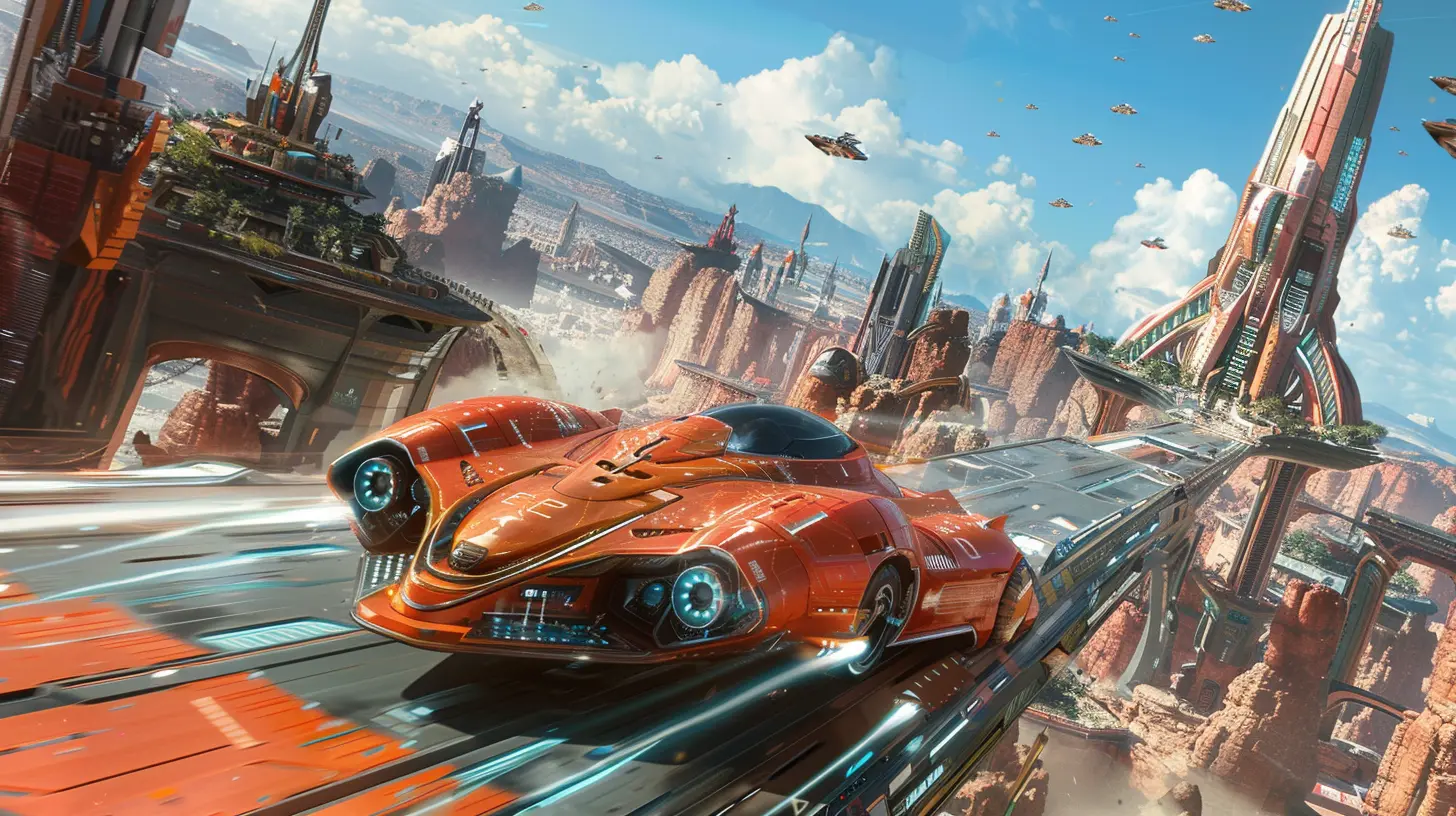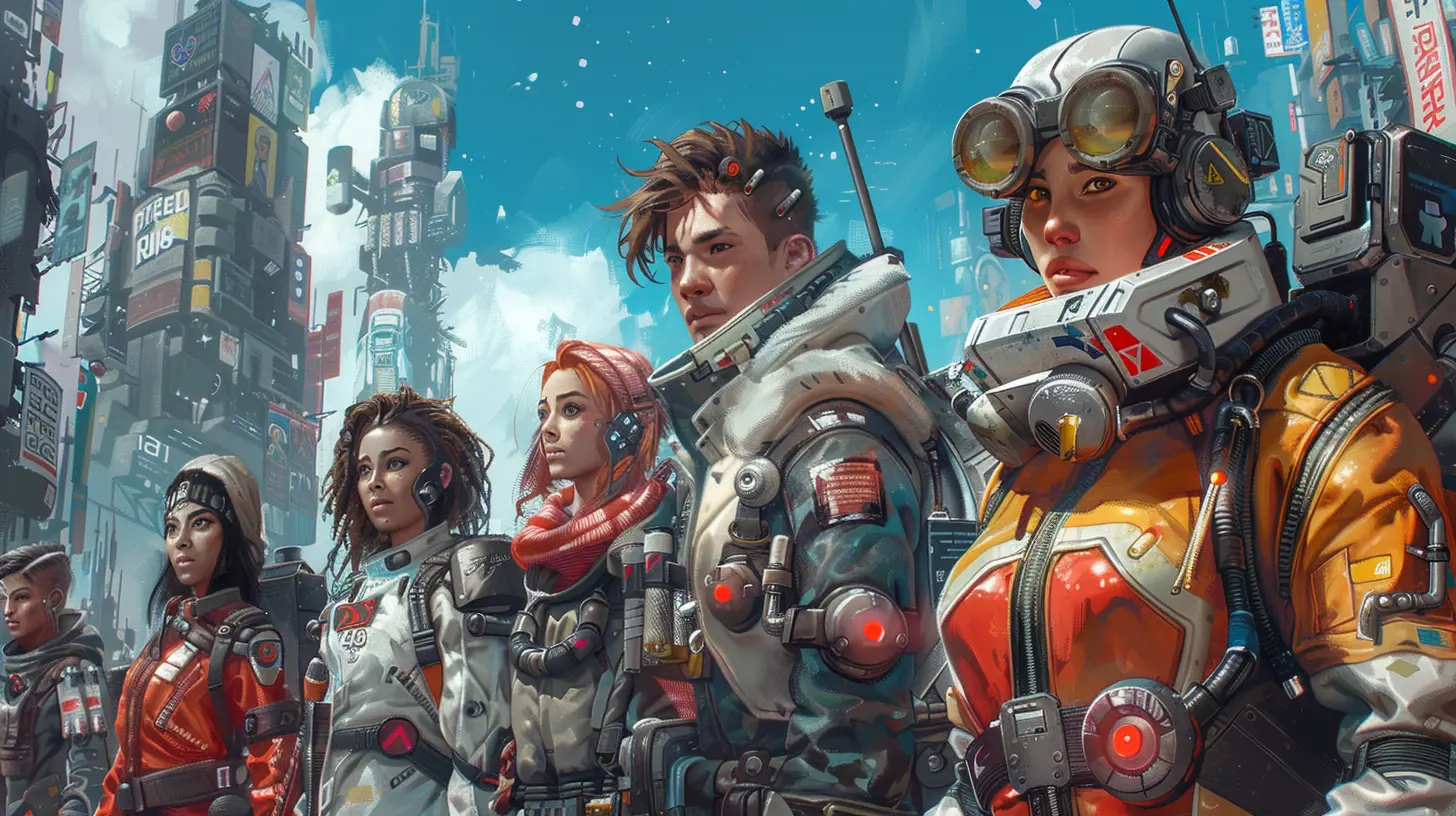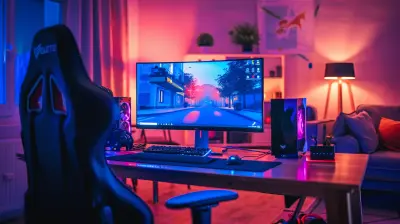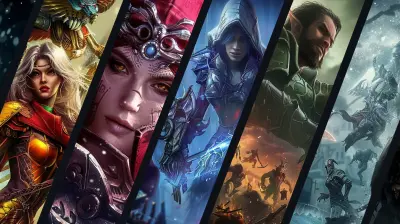The Future of Free-to-Play: What’s Next for the Industry?
10 July 2025
Let’s face it—free-to-play (F2P) games have come a long way. Gone are the days when "free" meant clunky graphics, shallow gameplay, and non-stop ads. Now, we’ve got games like Fortnite, Genshin Impact, Warframe, and Call of Duty: Warzone leading the charge. These juggernauts rake in billions, all without charging a dime upfront.
But where is this ride going? Can free-to-play keep evolving, or are we headed for a bubble that’s about to burst? Let’s break it down and look at what might be next for the F2P industry—from player trust, monetization strategies, to the potential of Web3 gaming and beyond.

A Quick Look Back: How Free-to-Play Took Over
Before we jump into the future, it helps to look at the past. Free-to-play started as a way for studios to lure in players by removing the barrier of entry—cost. Instead of paying $60 upfront, you could just... start playing. No strings attached.Or so it seemed.
Games like Angry Birds and Candy Crush became early F2P hits by offering limited free gameplay and then charging for power-ups, extra lives, or skipping wait times. Then titles like League of Legends, Warframe, and Fortnite flipped the model on its head with fully functional games that only charged for cosmetics or battle passes.
And the results? Players loved the flexibility. Developers loved the revenue. Everybody won… sort of.

The Current State of F2P: Where We’re At
Fast forward to today, and free-to-play is the norm, especially in mobile and PC markets. Even traditional console games are jumping on the train. F2P isn’t just a genre anymore—it’s a business model, and a massive one at that.But the current landscape isn't without its flaws:
- 🎮 Over-monetization: Loot boxes, pay-to-win mechanics, and predatory microtransactions turn players off real quick.
- 😡 Player distrust: We've started to wise up. We've seen the fine print. We know when a game is trying to squeeze us.
- 💸 Rising costs: Ironically, many gamers end up spending more on free games than they do on premium ones.
- 🤯 Content overload: Some F2P games drop so much content, it’s like drinking from a firehose. Overwhelming? Yup.
So here we are—standing at a crossroads.

So, What’s Next for Free-to-Play?
Let’s peek into the crystal ball and unwrap some of the trends and changes we’re likely to see in the near future of F2P.1. The Rise of Ethical Monetization
Let’s be honest: nobody likes to feel tricked. And that’s exactly how a lot of monetization models make players feel. The future? Transparency.Game devs are starting to realize that if they want players to stick around, they'll need to build trust. That means:
- No more loot-box gambling (thank you, legislation)
- Clear and fair microtransactions
- Cosmetics that don't affect gameplay
- Subscription battle passes with real value
Think Fortnite’s model—but make it even more player-friendly.
2. Play-to-Earn and Blockchain Integration
This one's controversial, but it’s happening—Web3 and blockchain-based elements are creeping into the F2P space."Play-to-earn" (P2E) basically means players can make real-world money from playing games. Whether it's earning crypto tokens, trading NFTs, or owning in-game assets that hold real value, this model adds a whole new layer to free-to-play.
Sounds awesome, right? Well, it can be—but it also brings risks like:
- Scams and rug-pulls
- Economic imbalance between players
- Games focused more on profit than fun
Still, when done right, P2E could be a game-changer (pun totally intended). Imagine owning your awesome sword skin and being able to sell it, trade it, or use it in multiple games. Yeah, that’s the kind of future we’re talking about.
3. Cross-Platform and Cloud Gaming Growth
Ever started a game on your phone, continued on your console, and then maxed out your weapon while on your laptop? If not, you probably will soon.Cross-platform F2P games are already becoming the norm. Games like Genshin Impact and Fortnite are playable on practically every device you own. This opens up a whole new world of accessibility, especially for F2P titles.
Add cloud gaming to the mix (shoutout to Xbox Cloud Gaming, NVIDIA GeForce Now, and even Netflix dabbling in games), and you’ve got a future where high-quality F2P games are playable anywhere—and that’s huge for attracting new users.
4. AI-Driven Personalization
What if your game knew what you liked before you did?With the rise of AI, developers can now serve up custom experiences, tailored missions, and dynamic difficulty settings based on your play style. Imagine a game that adjusts to how aggressive you are in battles, or nudges you toward specific cosmetics based on what you're drawn to.
This kind of personalization could massively boost player engagement—and yes, also sales. But if it’s done right and keeps players—instead of profits—top of mind, it could be a win-win.
5. The Evolution of Community Engagement
In the past, devs made the game, and players played it. Now? Players basically help make the game. Whether through feedback, mods, or even in-game content creation tools (looking at you, Roblox), we’re entering an era of collaborative development.Expect to see even more:
- Player-driven events
- Custom game modes made by the community
- Developer transparency and real-time dev diaries
- Creator programs that reward content makers
Free-to-play games will increasingly rely on players not just as consumers—but as co-creators.
6. VR and AR F2P Games
As headsets get cheaper and more people dip into virtual and augmented reality, it’s only a matter of time before F2P finds its home there too.Imagine a free VR shooter where you can level up, unlock gear, and play with friends all without spending a cent—unless you want that killer dragon-themed gun skin, of course.
AR games like Pokémon Go already gave us a taste of what's possible. The future? Maybe you’ll be building fortresses in your living room or battling aliens on your daily commute. The potential is wild.
7. Focus on Long-Term Player Retention
Gone are the days of "launch it and leave it" game development. Free-to-play studios are playing the long game now.They know that keeping a player for six months is more valuable than fleecing them in one. That’s why we’re seeing:
- Seasonal content updates
- Ongoing storylines
- Quality-of-life improvements based on player feedback
- Events that celebrate milestones, anniversaries, and communities
It's not about being a money-making machine. It’s about being a digital home players want to keep coming back to.

Challenges Still Ahead
Of course, not everything’s rainbows and free skins. The free-to-play industry still has major hurdles to clear:- Regulatory scrutiny: Governments are cracking down on loot boxes and predatory monetization.
- Market saturation: With countless F2P titles launching constantly, standing out is tough.
- Poor first impressions: If your F2P game launches with bugs, unbalanced gameplay, or shady monetization, good luck recovering.
That’s why the future of F2P will belong to developers who do two things really well: respect their players and evolve with them.
What Does This Mean for Gamers?
Let’s keep it real. As gamers, we’re more empowered than ever. We’ve got the tools to call out shady practices, the platforms to influence change, and the choices to play what we love.So what should you do?
- Support devs who respect your time and wallet.
- Avoid falling into the FOMO trap of buying every limited-time skin.
- Take breaks when F2P games feel more like jobs than fun.
- Stay informed and spread the word when a game nails it—or fails hard.
The future of free-to-play will be shaped just as much by players as by developers. And that? That’s pretty awesome.
Final Thoughts
Free-to-play is here to stay. It’s already changed the way we play, pay, and even think about games. But this isn’t the final form—it’s still evolving. From smarter monetization and AI-powered experiences to blockchain rewards and VR playgrounds, the next chapter of F2P is gonna be wild.The best part? You don’t need a credit card to join the ride. Just pick up your controller, keyboard, or phone—and dive in.
all images in this post were generated using AI tools
Category:
Free To Play GamesAuthor:

Lana Johnson
Discussion
rate this article
1 comments
Noemi Clarke
Great article! It's exciting to think about the future of free-to-play games. I love how the industry is evolving, especially with new monetization strategies that respect players. Can't wait to see what’s next!
July 17, 2025 at 3:44 AM

Lana Johnson
Thank you! I'm thrilled you enjoyed the article and share your excitement about the future of free-to-play games and their evolving monetization strategies!


